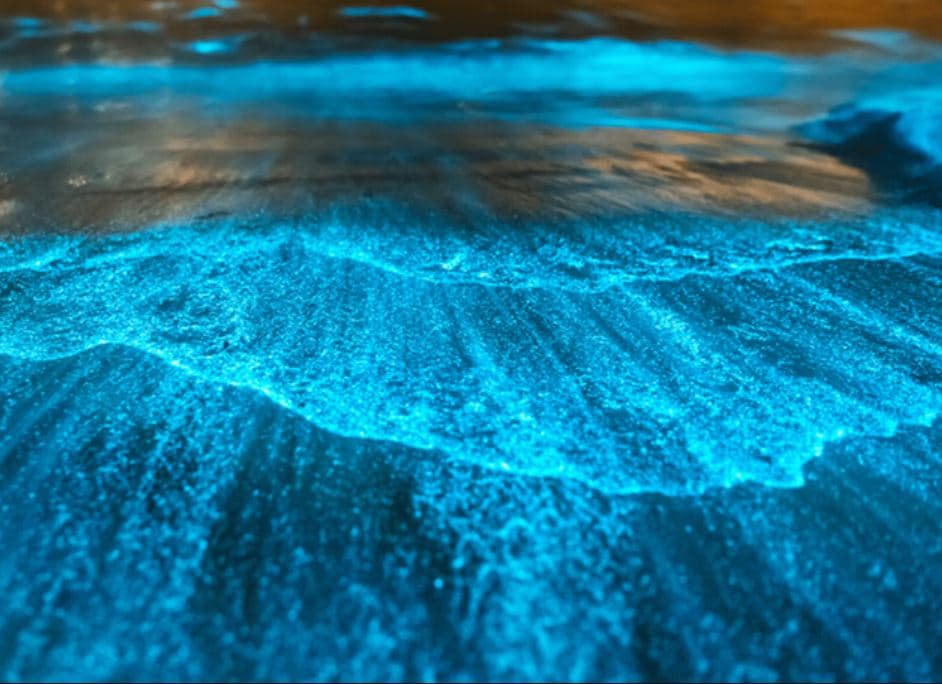Dr. Anja Schulze on the Basics of Bioluminescence
July 13, 2023
Tweet
By Taylor Bounds, Content Specialist
Cadets on board the TS Kennedy arrive in San Juan, Puerto Rico this month, ending the third of five legs of summer sea term. Awaiting cadets, faculty, staff and crew are three bioluminescent bays that emit a neon blue light when disturbed.
Bldg. 311 caught up with Dr. Anja Schulze, Texas A&M University at Galveston marine biology professor and Assistant Department Head of Graduate Affairs, who illuminated us about bioluminescence.
What causes bioluminescence?
Bioluminescence is the generation of visible light by living organisms. It results from a chemical reaction in which a small molecule, called luciferin, is oxidized by an enzyme, generically known as a luciferase. The reaction causes the luciferin molecule to become "excited", meaning that it takes on a high energy state. It then releases the energy in the form of a flash of light.
What purpose does bioluminescence have?
It can have many different functions, such as predator deterrence, luring prey or luring a sexual partner. Sometimes we have no idea what the function is, and it's possible that there isn't always one. Theoretically, bioluminescence could be just a byproduct of some other physiological process.
What kind of organisms are bioluminescent?
Bioluminescence is very common in the ocean and in some terrestrial organisms. It evolved multiple times throughout evolutionary history. Bioluminescence occurs in certain bacteria, in unicellular plankton, in many animals and even in fungi. The bioluminescent bays in Puerto Rico are home to a type of dinoflagellate, a unicellular plankton organism, which glows when agitated and exposed to oxygen.
Can we see bioluminescence in Galveston?
Yes, we have similar dinoflagellate species [to the ones found in San Juan] around Galveston as well, but they are not always present. You can also look for bioluminescence in the air - fireflies are the best example!
For more about the ports of call, schedule and events for summer sea term 2023, visit the summer sea term website.
###
Media contact:bounds@tamu.edu
More:
Read more about Science & Technology
Read more about Maritime Transportation
Read more about Texas A&M Maritime Academy
Read more about Student Life